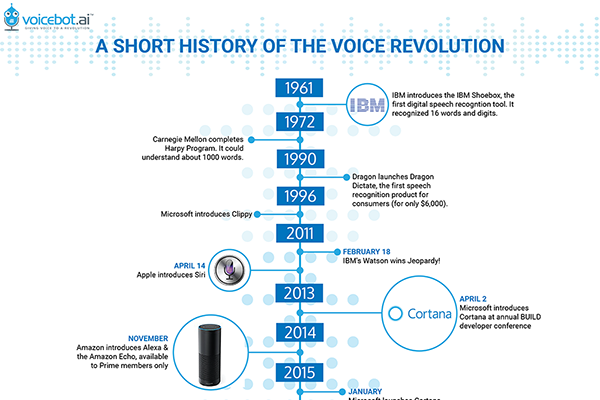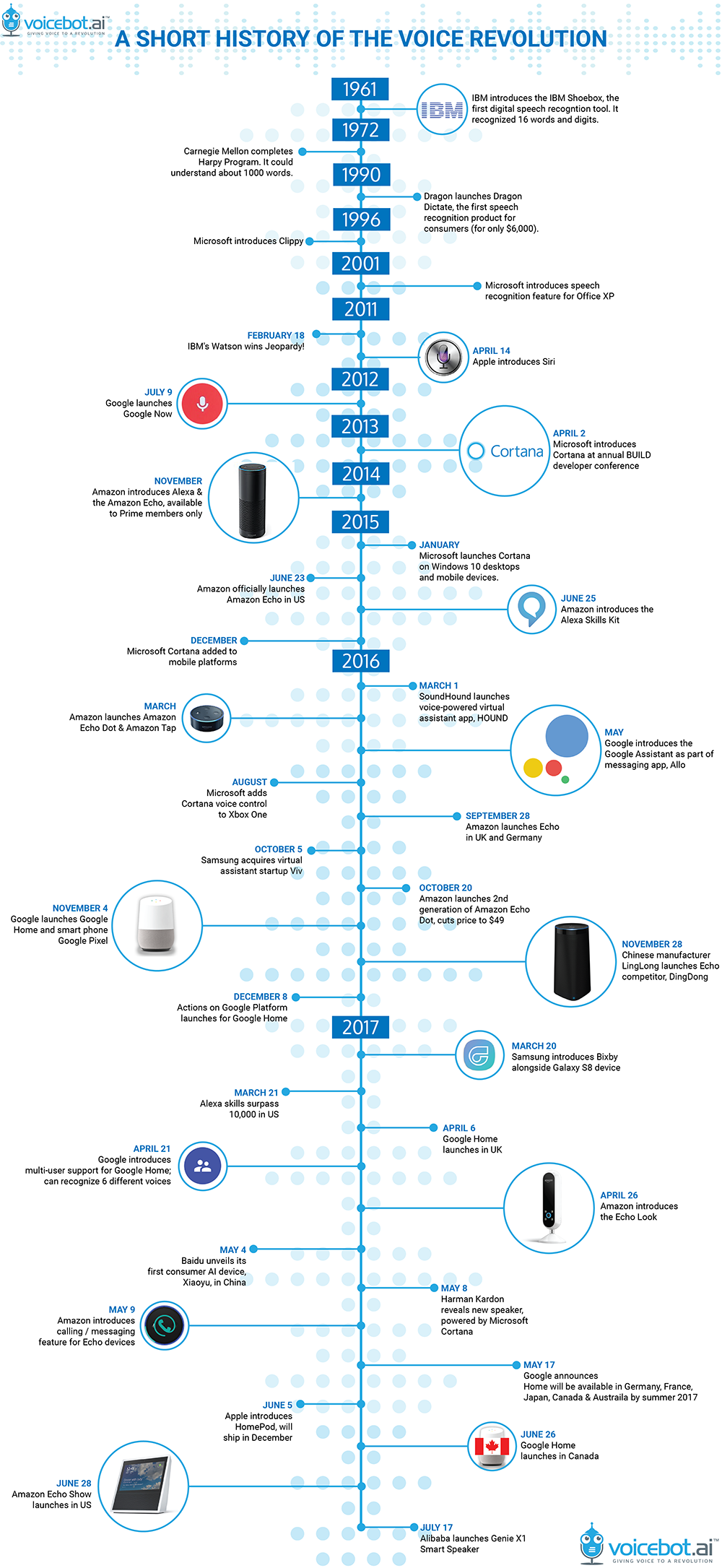Voice Assistant Timeline: A Short History of the Voice Revolution
We’ve updated this timeline through Q4 2020. Check it out here.
Voice Assistant Origins
It can be difficult to view the rise of voice assistants as a whole as more voice assistants and their smart speaker devices enter the market. Contrary to popular belief, voice assistants didn’t start with the launch of Amazon Echo. We created a timeline of voice assistants for you to see how the voice revolution evolved since its beginnings in the early 1960s. When you look at the timeline, you can easily see four distinct eras of voice assistant history. It all began with what we’d like to call the Origin period. IBM became the first to introduce a voice assistant with its Shoebox device. While very primitive, it did understand 16 words and 9 digits.
Pre-Modern Natural Language Assistants
This laid the groundwork for the Pre-modern era, when voice and virtual assistants became available to consumers for the first time. Dragon’s speech recognition software led the way with competent voice recognition and transcription. Microsoft’s text-based virtual assistant, Clippy, showed us how natural language in text could be tracked, interpreted and used as a basis for interactive feedback. While Clippy was never popular, it did teach us some lessons about what not to do when it comes to building virtual assistants. Namely, that virtual assistants should only be heard when explicitly called for.
Modern Era Transitions to the Smart Speaker Revolution
Enter Siri and the Modern Era of voice assistants. This is where smartphones and voice interaction collided. Siri was the first voice assistant to reach a wide audience and others, like Google Now and Microsoft’s Cortana soon followed. Then in 2014, Amazon introduced the Alexa voice assistant and Echo smart speaker. As you can see, the number of milestones increases significantly after Alexa’s launch, ushering in what we call the Smart Speaker revolution — and the birth of Voicebot.ai.
What’s next? The smart speaker revolution will play out over several years but we expect that to morph into an ambient voice revolution where voice assistants aren’t constrained by small, independent devices. Instead, voice assistants will be embedded in the environments we inhabit.
We hope you learn something new from the voice assistant timeline and it serves as a useful reference. If you think we’re missing something significant, feel free to reach out to us on Twitter or Facebook. Click here to download a PDF of the timeline above.
Share this Image On Your Site
New Voicebot Report Says Nearly 20% of U.S. Adults Have Smart Speakers
A Timeline of Voice Assistant and Smart Speaker Technology From 1961 to Today



